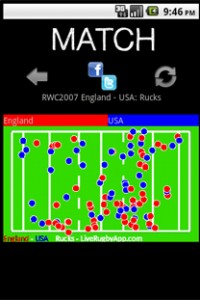[Disclaimer: this post represents my own view and not that of my employer. As if you didn’t know that already.]
Do the words “mobile portal” appeal to you?
I have been working extensively, with a small team, to launch St. George’s University of London‘s mobile portal since last January after we decided to go down the road of a web portal rather than that of a mobile app. The reason for this choice is pretty clear: despite the big, and growing, success of mobile apps, we didn’t want to be locked in to a given platform or to waste resources on developing for more platform. Being a small institution it’s very difficult to get resources to develop on one platform, even less on multiple ones. We also wanted to reach more and more users, and a mobile portal based on open, accessible, resources made perfect sense.
As many of the London-based academic institutions, St. George’s needs to account for two different driving forces: the first is that as an internationally renowned institution it needs to approach students and researchers all over the world; the second is that being based in a popular borough it is part of the local community for which it needs to become a reference point, especially in times of crisis. Being a medical school, based in a hospital and a quality NHS health care structure, emphasizes a lot the local appeal of this institution.
This idea of St. George’s as an important local institution was one of the main drives behind our mobile portal development. We surely wanted to provide a good, alternative, service to our staff and students, by letting them access IT services when on the move. However, the idea of reaching out to people living and working around us, to get St George’s better known and integrated within its own local community, lead us to a thriving experience developing and deploying this portal. “Can we provide the people living in Tooting, Wandsworth, and even London, with communication tools to meet their needs, while developing them for people within our institution?” we asked ourselves. “Can we help people find more about their local community, give them ideas for places to go, or show them how to access local services?“.
This coalition government had among its flagship policy that of a “Big Society”, having the aim “to create a climate that empowers local people and communities”. Surely a controversial topic, nonetheless helpful to rediscover a local role for institutions like us to get them back in touch with their own local community, which in some case they had completely forgotten.
In any London borough there are hospitals, universities, schools, societies, authorities. No matter their political affiliation, if each of these could do something, they would improve massively the lives of the people living within their boundaries. Can IT be part of this idea? I think so. I believe that communication in this century can and does improve quality of life. If I can now just load my mobile portal and check for train and tube times, that will help me get home earlier and spend more time with my family. If I can look up the local shops, it will make my choices more informed. It might get me to know more local opportunities, and ultimately to get me in touch with people.
Developing this kind of service doesn’t come with no effort. It required work and technical resources. We thought that if we could do this within the boundaries of something useful to our internal users, that effort would be justified, especially if we tried to contain the costs. With this view in mind, we looked for free, open-source, solutions that we might deploy. Among many frameworks, we came across Mollyproject, a framework for the rapid development of information and service portals targeted at mobile internet devices, originally developed at Oxford University for their own mobile portal. When we tried it for the first time, it was still very unstable and could not run properly on our servers. But we found a developers community with very similar goals to ours, willing to serve their town and their institution. We decided to contribute to the development of the project. We provided documentation on how to run the Molly framework on different systems, and became contributors of code. Molly was released with its version 1 and shortly afterwards we went live.
Inter-academic collaboration has been a driving force of this project: originally developed for one single institution, with its peculiar structure and territorial diffusion, it was improved and adapted to serve different communities. The great developments in the London Open Data Store allowed us to add live transport data to the portal, letting us have enthusiastic reactions from our students, and these were soon integrated in the Molly project framework with great help from the project community. I think this is a good example of how institutions should collaborate to get services running. A joint effort can lead to a quality product, as I believe the Molly project is.
The local community is starting to use and appreciate the portal, with some great feedback received an the Wandsworth Guardian reporting about a “site launched to serve the community”. I’m personally very happy to be leading this project as it is confirming my idea that the collaborative and transparent cultures of open source and open data can lead to improved services and better relationships with people around us, all things that will benefit the institutions we work for. The work is not complete and we are trying to extend the range of services we offer to both St. George’s and external users; but what we really care and are happy about is that we’re setting an example to other institution of how localism and a mission to provide better services can meet to help build better communities.
